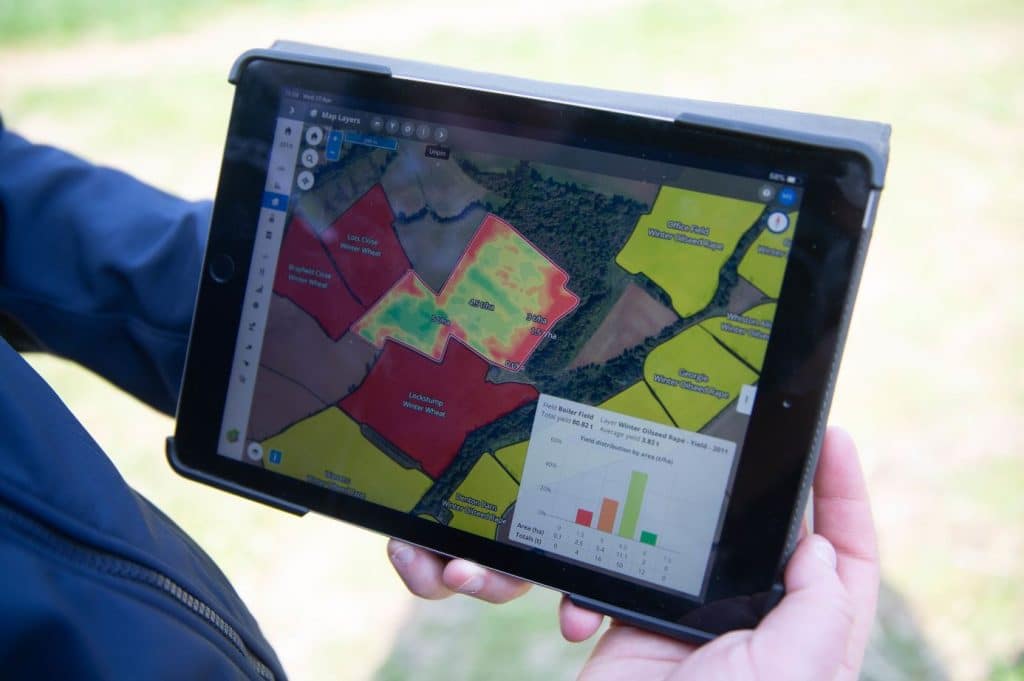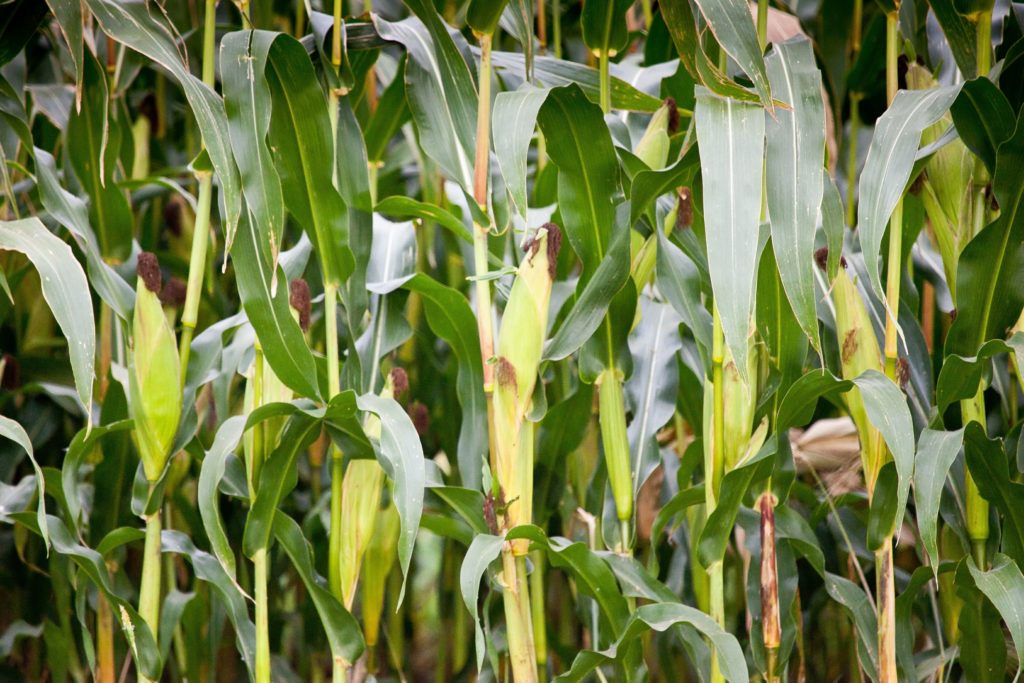Demonstration site trials focus on getting the most from maize – British Dairying
Fast and even establishment is essential for productive maize crops, and is something that has been the focus of 2024 trials at Hutchinsons' most south-westerly demonstration site ...
Fast and even establishment is essential for productive maize crops, and is something that has been the focus of 2024 trials at Hutchinsons’ most south-westerly demonstration site at Trethick Farm. British Dairying looks at what we can learn from the results.
From strip tillage to late foliar nitrogen, 16 different trials and treatments have been put under the spotlight this year at Helix Cornwall, hosted by Martin Dairy near Bodmin.
Much of the focus has been on maize establishment and nutrition, as well as finding ways to improve conventional practices, explains Hutchinsons agronomist James Whatty. He manages the trials alongside the farm’s Richard Martin.
“We know a lot of maize yield is determined right from the start,” says James. “Seeds should ideally all germinate and establish evenly within a day or so of each other. You don’t want germination spread out over a week or more across the field as it makes crops harder to manage throughout the season and limits yield potential.”
Strip till trial
Currently, the farm’s maize ground is ploughed, cultivated, and sown using a combination drill fitted with a maize seeder on the rear, which provides an effective approach that covers ground quickly and utilises existing equipment.
However, with soil health at the forefront of many decisions, and reduced tillage now widely used for establishing the farm’s cereal crops, this season two field trials were set up to see whether a lower disturbance strip tillage system could challenge the traditional plough-based maize establishment.
One trial area was in a field of winter barley stubble, the other followed a three- to four-year temporary grass ley. Both fields are predominantly sandy clay soil with relatively high stone content, and all land received slurry and manure over winter to replicate farm conditions.
In the strip-till plots, ground was first worked using a specialist strip tillage machine featuring low disturbance subsoiler tines and a rotavator, before being drilled with either the farm’s standard combination drill, or a Lemken Azurit 10 precision drill loaned by a local dealer. Row widths of both drills matched the strip-till bands.
A key difference of the Azurit drill is its twin disc coulters which place seed in a ‘DeltaRow’ configuration, comprising two staggered twin rows arranged at a distance of 12.5cm. The firm claims this gives individual plants more space to grow than in a standard single row system.”It was interesting to see that the establishment in the Azurit- sown plots was considerably better, probably due to the seed placement and good soil coverage/ consolidation,” says James.
Omnia analysis of yield mapping data collected from the forager generally showed little difference between the drills where strip-till was used in the stubble, however some differences were identified when comparing strip-till against the farm’s standard plough-based approach. In some places, strip-till yields were 4t/ ha down, although in other areas they were on a par.
“We’ve cross-referenced yield maps with Terramap data from the same block of land in Omnia, and the variations seem to match quite closely with phosphate indices,” notes James. “The thinking is that in the strip-till areas there is less soil movement, which means less mineralisation, and it makes it harder for young maize plants to access the phosphate. We also noticed soil was visibly wetter and colder in the strip-till areas that were worked and left for 24 hours before drilling, which may also reduce phosphate availability.”
Extreme test
Little difference in establishment speed was observed where strip-till was used in stubbles, however in the strip-till areas following grass, maize was slower to get going. “It’s likely that the dying grass on the surface was using up some nitrogen as it broke down, just as the maize needed nutrients to get away” James continues. “That was quite an extreme test, but we wanted to identify the limits for some of this machinery.”
However, in terms of soil structure, there were clear benefits from using strip tillage, with land being noticeably easier to travel on at harvest in mid- to late-October, and with higher worm counts. “It’s quite a balancing act. There’s a lot of detail to consider if you are thinking about going down the strip-till approach, and it is a big move to make, which involves extra cost in terms of the equipment, so certainly won’t be for everyone.”
Looking ahead to next year, trials are likely to focus more on the finer details around existing drill set-up, nutrition and establishment.
Phosphorus (P) is an essential nutrient for strong root development in many crops, and maize is no exception. Another trial at Helix Cornwall showed promising results from using placement P compared with traditional seedbed applications of diammonium phosphate (DAP) at drilling.
The work compared a 10kg/ ha application of Primary-P microgranular fertiliser with seed at drilling to a standard approach involving 125kg/ha of DAP to the seedbed.
Placing a smaller amount of fertiliser exactly where it is needed boosted root development and improved subsequent scavenging ability, which carried through to higher grain yield and slightly higher dry matter. There was a 14% increase in average cob weight where Primary-P was used.
“That’s a substantial reduction in the quantity and cost of fertiliser required, while delivering improved cob weight,” says James.
Even where the soil index is relatively high, maize may not be able to access those reserves until roots are developed enough, so kick-starting growth with a placement fertiliser can be beneficial.
“Unless the root physically touches phosphate in the soil, it’s not going to access it,” he explains. “DAP is an expensive way of doing this, which is why we’re looking more at concentrated phosphate starter fertilisers like Primary-P, although, again, the cost of specialist equipment is a big consideration.”
Reducing artificial fertiliser use could be particularly important if rules around phosphate use are tightened in future, he notes. Regular soil sampling and Terramapping shows P and potassium (K) deficiencies can flare up very quickly, particularly where growers are on more intensive multi-cut systems.
“Even where you’re applying bagged fertiliser alongside organic manures, it can be hard to maintain indices when there are high levels of crop offtake.” Knowing what’s in your soil with accurate sampling and mapping using a system like Terramap could therefore be really beneficial in helping to avoid deficiencies occurring, says James.
Elsewhere, different approaches to boosting late nitrogen have been trialled to see if it can improve yield by delivering more nutrition closer to the period of peak demand. “Maize needs the bulk (c.75%) of its nitrogen at tasseling, so we’re trying to put foliar nitrogen on as close to that as possible to see if there’s an extra benefit,” James says.
Three foliar products were compared, including a bacterial nitrogen biostimulant, one that converts nitrous oxide to nitrate, and an advanced liquid nitrogen formulation.
As seen in the placement P trial, while there was no significant difference in fresh weight yields between treatments, there was an increase in kernel weight, with two of the three treatments delivering up to a 10-18% benefit.
“When you do these trials, people often expect to see big visual differences in crop height or biomass,” he notes. “That wasn’t the case, but if you can increase cob weight by a few percent, and multiply that across the whole maize area, which in Richard’s case is 220ha, that’s a huge amount more grain and starch you’re producing.” This benefit equated to a margin over input cost of between two and 4.5 on the foliar products.
A notable observation from 2024 maize crops has been the level of eyespot pressure many have faced, exacerbated by wet summer conditions, James says.
“Some crops did senesce very quickly, which definitely hit yield in places. One big issue with eyespot in maize is the fact that once you see a problem, crops are usually too big to treat.”
Pressure is generally greatest where maize is grown continuously or close in the rotation, so the main way to reduce risk is by extending the gap between cropping, and/or selecting more resistant varieties.
Large amounts of crop debris from affected maize crops can increase the eyespot pressure in a following wheat, so growers need to be aware of this risk when selecting varieties and planning spray programmes.
Farm Facts:
Martin Dairy, Trethick Farm, Bodmin
| 950 dairy cows + 800 followers (Swedish Red cross Holstein dairy cows averaging 9,000 litres) |
| 750ha of cropping (110ha owned, rest rented) |
| Cropping includes maize, winter wheat, winter and spring barley, forage rye, grass |
| Soil type is mainly light loams with some heavy clay |
| Currently hosts Helix Cornwall demonstration |
| Using Terramap and Gold soil testing to tailor management and input use. |


